Blog About Art Related
Matters
|
 |
Art related matters on this website
|
|
BIOGRAPHY I started
painting in 1970 while practising as a Chartered Architect. I have exhibited in
various group and solo shows ever since. I retired from Architecture in 1997 to paint
and sculpt full
time, read more...
about me the artist and my work
MY PHILOSOPHY As a professional artist, I am driven obsessively to create artworks which
celebrate the beauty of Nature, nourish
the human spirit, and provide enjoyment,
stimulation and a touch of magic in people's lives, see
about my approach to creativity
INFLUENCES Famous international artists I most admire include Cezanne, van Gogh,
Klee, Picasso, Pollock, Monet, Kandinsky and Turner. Generally, I just love
the post impressionists, abstract expressionists and
Indigenous Australian aboriginal
artists ...
my artistic influences
GUESTBOOK "Your paintings arrived undamaged and it was a
revelation how much better they look 'in the flesh' as compared to the images on
your website. We are most happy with the 3 paintings purchased. We also
would like to compliment you on your professional approach and organising the
speedy delivery ..."
read more guestbook entries
and testimonials
VINTAGE PAINTINGS FROM THE ARCHIVES I recently scanned some slides
of my paintings from the seventies. Most of them sold or given to friends
as gifts. See these images
|
|
CHARITIES To date I have donated many
of my art
works to my favourite charities, including four paintings to
Jeans for Genes Charity Art
Auctions - in support of the
Children's Medical Research Institute in Sydney. I always welcome requests of donating paintings to worthy causes. This is one way to repay
my debt to society and to help others less fortunate than me.
FREE OFFER Purchasers who spend $500
or more may choose a free copy of a music DVD featuring images of my artworks on the covers. Twenty
eight of these DVDs have been released by Opus Arte (an arm of the BBC) which
feature Australian Opera productions filmed for television in association with the Australian Broadcasting Corporation...
opera and ballet DVDs
SELECTING AND PLACING ARTWORKS professional advice
provided -
DOs and DON'Ts tips
QUOTATIONS "Abstract art should be enjoyed just as music is
enjoyed – after a while you may like it or you may not." - Jackson Pollock
quotes on creativity, art, painting and
abstraction
EXAMPLES of subject matters in this web include:
contemporary and abstract seascapes,
abstract landscape paintings, minimalist paintings, abstract art, contemporary landscape artists,
famous artists, famous paintings, using recycled materials, abstract art paintings,
beach paintings and famous painters and also professional visual artists. |
Gerzabek paintings from the beginning
|
I bought a slide scanner recently so now I can convert my old
coloured slides to digital images.What
a nostalgia trip for an artist to go back 40 plus years to the beginning of his
career in art creation.
In the early seventies I worked as an
Architect full time during the day whilst at nights I painted obsessively and
feverishly, sometimes well into the night. |
|
Unfortunately, having had two jobs this way, I did not have any
time to exhibit or promote my artworks, enter art prizes or show my work to
gallery owners. Hence my sales were sporadic and mainly limited to friends
and acquaintances.Here are a few examples of my work at
that time. The images are not perfect, my photography was relatively
casual and not to my current standard.
Still most of these works are strikingly
original, vital, and not
really amateurish. |

Blue moon

Blooming
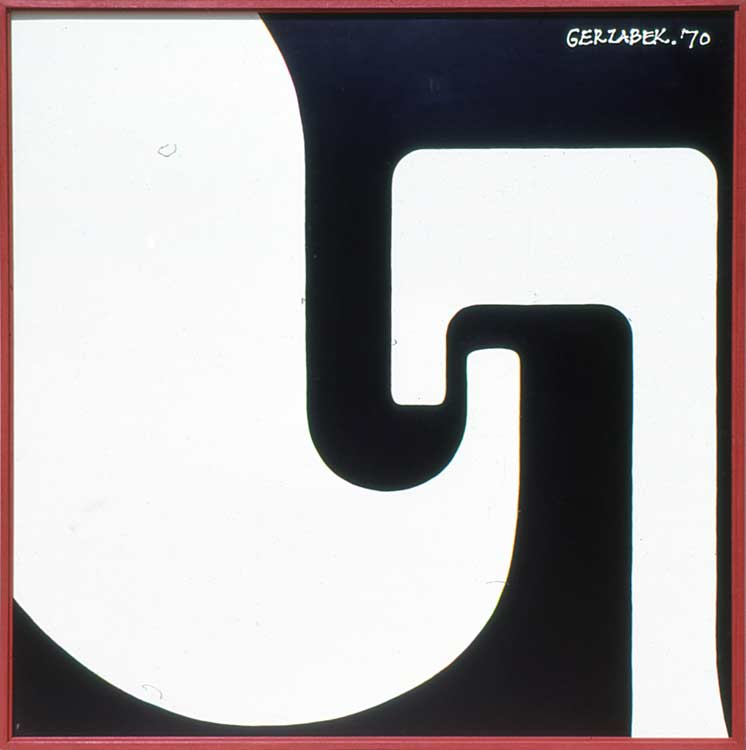
Black and white
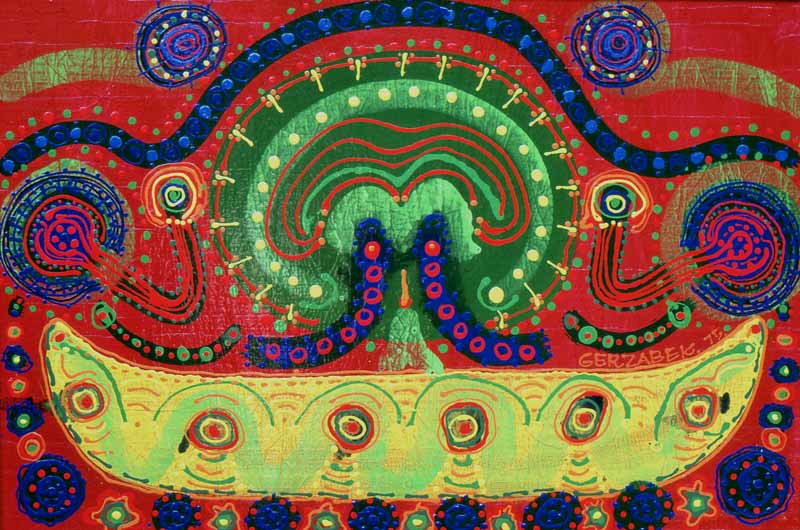
Banana boat
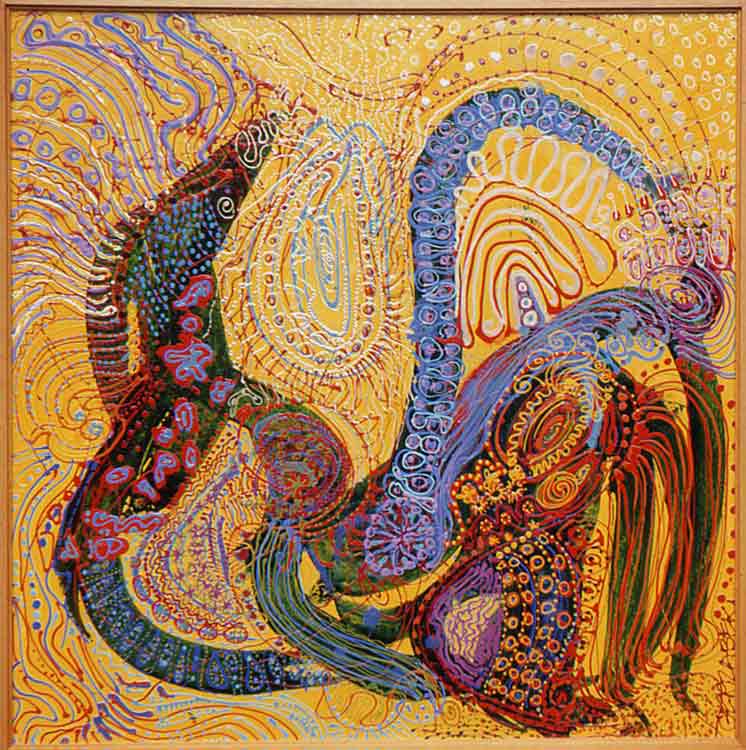
Brighten up
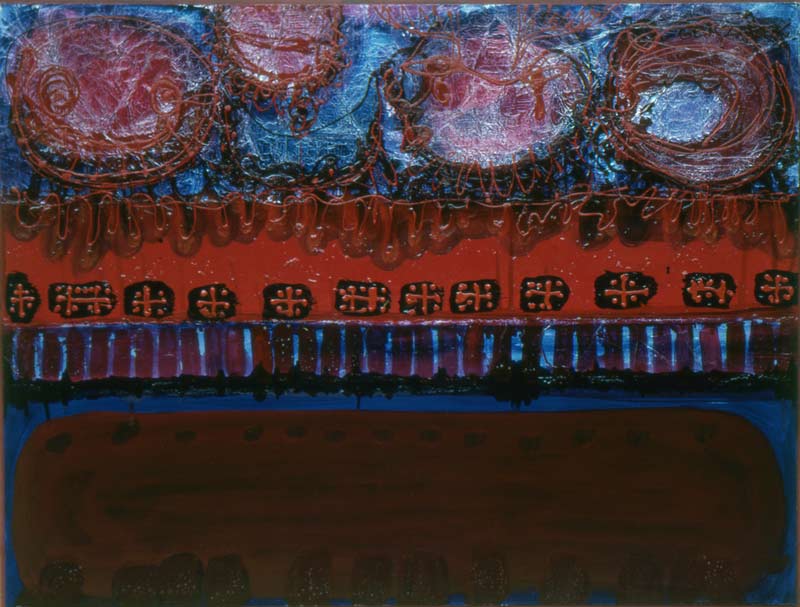
What's below
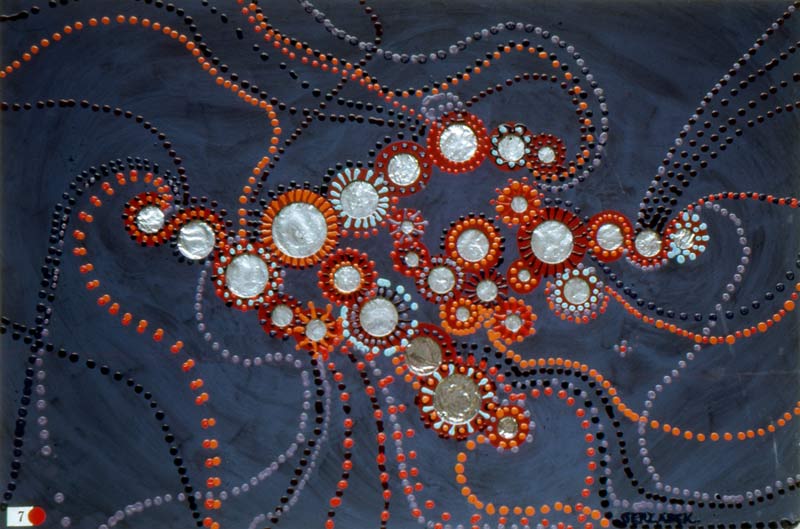
Starscape
Abstract landscape paintings
|
|
This short essay is not an academic treatise but my
subjective opinion. I believe landscape paintings are inspired by Nature, the
natural environment in its many manifestations.
Many different kind of
landscapes can provide the source for inspiration: wilderness areas, mountain
ranges, forests, deserts, open plains and fields, seashores and also waterways
and the ocean are my favourites.
Landscape paintings can either be traditional or
contemporary. Traditional landscape paintings are usually depictive,
photorealistic or stylised to some extent.
Contemporary landscapes are in some aspects different from
what the eye sees, they are modified by the individual creative process applied
by the artist. The visual image produced may be simplified, exaggerated,
reorganised or abstracted to some degree in comparison to the actual landscape.
The artist would modify the observed subject by introducing a subjective element
of his own. For example, the painter may only use the colours of the landscape
but reassemble them in a different free-form pattern.
As I see it, the inspiration drawn from the
landscape is always important as a starting point, and even when the creative
modifications are carried out to the extreme degree, it is still important that
at least the “feeling of being there” should be apparent. The memory, the
ghost, the jolting recollection of the place should be felt.
|
|
Every landscape has a dominant characteristic, a
certain mood and an ambience. The challenge for the artist is to capture
this essence. This can be achieved in many ways, I prefer the following
approaches, loosely based on historical art movements:
-
impressionist - by focusing on the colour mix, the fine details and the
decorative aspects
-
expressionist - by boldly capturing the dominant forms and shapes and utilise
the life-force energy residing in the place by intuitive action-painting
-
minimalist
- by reducing the landscape to its basic essential elements and omitting all
unnecessary and distracting details
-
pattern
making - by focusing on the rhythm, patterns and texture of a place, for
example, by focusing on the minutia of close up details
-
applying
fantasy - creating imaginary landscapes which express the artist’s mindset as
opposed to the reality of the visible world
I am sure there are also many other ways to come up with
original solutions. Landscapes have a generative power and presence which
inspire the mind and soul of visually sensitive artists. It is not unusual to
be carried away by the visual stimulation provided by exciting landscapes and
seascapes and take off on a journey of exploration.
For me, the adventure of Nature inspired new discoveries,
the stretching of the imagination and producing original artistic delights is
the most satisfying aspect of art making.
|
|
ABC TV broadcast a most interesting program late
last night: Herb and Dorothy - The Vogel Collection. It was about a New York
couple who started collecting modern "new" art more than 50 years ago and
amassed a quality collection.
Not being rich, they restricted their collection to
affordable art pieces. They nearly always selected prominent artists or upcoming
and emerging ones who invariably became famous as time went by. They
focused on the latest trends in art and bought the most progressive paintings,
sculptures and installation pieces. They focused on abstract, minimalist
and conceptual art without limiting their interest to any one movement.
They had a few rules for collecting: they had to
like the piece, they should be able to take it with them on public transport or
taxi and it should be able to fit into their apartment. Usually they met the
artists face to face and following a friendly discussion they ended up buying
something relatively modestly priced. They had an unusually sharp eye to
pick out the best art pieces available at the time.
|
|
They followed current trends by visiting progressive
art galleries, attending museum exhibitions and such. The wife's income
was spent on rent, food and necessities, whilst the husband's earning was
devoted to purchasing art. When they did not have enough money to buy a piece
they loved, they payed instalments, or when they could not afford a Christo
installation, they ended up baby-sitting Christo's cats in return for a drawing.
Their small flat was crowded with artworks, all
walls were covered with drawings, paintings and bas-reliefs and sculptures.
The whole flat resembled a hoarder's abode, except every available space was
filled with artworks not junk.
Their collection, which they exhibited in various
galleries time to time, was eventually donated to the National Gallery of Art in
Washington USA. It worth many millions today, in fact, it is considered
priceless.
Driven by their obsessive love of art, it is amazing
how much they managed to achieve on a limited budget. It is also amazing
how much pleasure they got out of this passion for art.
|
DO's and DON'Ts for
selecting and displaying paintings
|
Preliminary requirementsBefore deciding to purchase an artwork from a gallery or
direct from the artist, make sure the artist
used high quality paint and not inferior student quality pigment.
Artist
quality paints will not fade readily and are more stable unlike cheap household
paints and student grade pigments. Unfortunately, many emerging and
"self-declared" artists use inferior materials, including canvas, stretcher bars
and paint and unsuitable yellowing varnish. In the case of digital prints, they
may not use pigmented inks and acid-free paper, but dye based inks which fade
quite quickly.
Avoid experimental mediums such as bitumen and like, I have
seen many artworks self-destruct over time where the "artist" experimented with
unproven methods and materials including non-archival materials.
Selecting artworks
Look at all available paintings and sculptures in the gallery
or artist studio and assess the artwork's
suitability for their intended location. However, when selecting a piece do not rely entirely on
intellectual reasoning and logic, but listen to your gut feeling and intuition.
An artwork should "speak" to you, capture your attention and
get you emotionally moved. Recognise this and follow your desire and
instinct. If you and your partner cannot agree on an
artwork, consider having a "his and hers" purchase, ie each of you choosing
a piece really really liked, rather than a middle of the road compromise.
Always choose enjoyment over investment considerations unless your
main interest is just to make a profit. Hang
paintings in living areas instead of mirrors
Instead of mirrors and such "lacking in personality" items, consider hanging paintings or bas-relief wall sculptures on
your walls . When you have mirrors in living areas (as opposed to
bathrooms and dressing rooms) why would you want to look just at
your own reflection all the time when you could enjoy an artwork instead.
You might be very pretty and impressive, but ... really, stop being narcissistic
and be serious!?
|
|
Advice on hanging paintingsDo not try to match colours in a painting to your
cushion or curtain. This pedestrian approach will ignore or minimise any artistic merit an artwork
may offer. Most paintings and sculptures have a life of their own and do
not need to harmonise with an existing interior design colour scheme.
It is important though that there is no significant clash with
existing dominant colours in the room but a certain amount of contrast may be
acceptable and beneficial. Like jewellery provides accent to an otherwise
harmonious outfit.
Do not place a small painting on a large wall. Be brave and
choose a decent size artwork on a given wall space that creates an impact and
improves your visual environment.
Do
not hang paintings too high, ie the centre line of the painting too far above
the eye level of an average height woman.
Don't be afraid to buy a non-cliché painting, ie a highly
original piece different from the run-of-the-mill ordinary stuff. Many
galleries promote pigeon-holed, mass produced works, where a successful artist
is encouraged to turn out paintings in the same style over and over. The
sense of adventure and the thrill of discovery and the magic of freshness may be missing
from such works. Give preference to
galleries and artists who have a satisfactory return and refund policy.
This is important in case you are not
entirely satisfied with your purchase. If you own a
number of paintings, try to rotate them between rooms and available wall spaces.
You will be surprised how a painting can assume a new lease of life in a new
location. It is like a holiday for pictures and for you like a pleasant
meeting of an old friend. |
Jeans for Genes Charity Art Auctions
|
|
Jeans for Genes Art Auction are held in Sydney
every year. World famous celebrities, sports stars, entertainers and other
prominent people donate their personally signed jeans and prominent Australian
artists are turning the jeans into artworks. |
|
All of the jeans are auctioned during a special
dinner function and the proceeds are used by the Children's Medical Research
Institute for valuable medical research.
|

Simon Tedeschi (sans jeans) with Ernie Gerzabek
who incorporated Simon's jeans in his artwork below
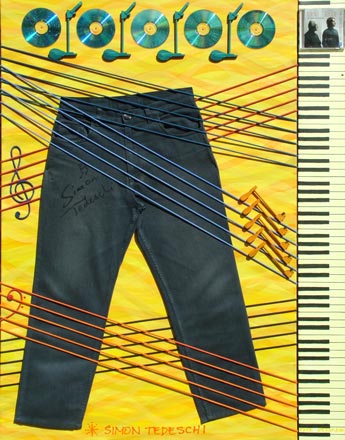 ● ●
Simon
Tedeschi 2006
Sold
This contemporary
artwork by artist Ernie Gerzabek is a tribute to
Simon Tedeschi, the talented
young Australian concert pianist. This extraordinary performer approaches his
music with sensitivity, passion and superb technique. Simon has performed not
only in Australia but in prominent venues all over the world.
This artwork reminds us that when Simon
interprets the composer’s score, he relies on his mastery of the concert piano -
which is basically just a mechanical device. He is at one with his instrument,
with all its limitations and infinite possibilities – the piano is part of him
and he is part of the piano – a marvellous relationship!
|
|
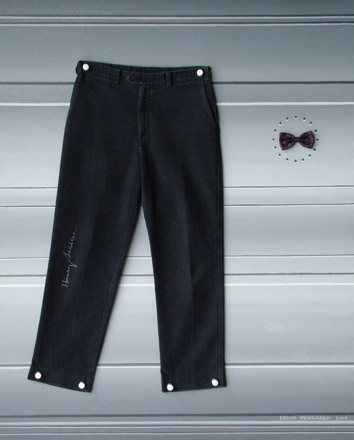 ● ●
Harry Seidler 2006
Sold
A
tribute to Harry Seidler, world renowned and award-winning Sydney Architect by
artist Ernie Gerzabek. As a fellow Architect he has admired Seidler’s work
since his student days.
In
his painting Gerzabek evokes the seemingly simple but functional style of the
master, using Seidler’s preferred palette ranging from quartz white to granite
greys. The façade-like background is carefully divided by joints and recesses
into well considered proportions.
Minimalist yet stylish, unpretentious yet sophisticated, it is an affirmation of
quality and excellence and rejection of the merely trendy and derivative.
|
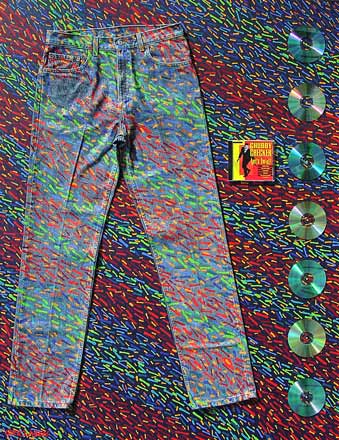 ● ●Chubby Checker 2003
Sold
Let's Twist! Get up and give it a go, do not think, just
enjoy!
The joyous tune of the Legend is washing over you in waves - a
rich big voice and the pounding rhythm of a big heart filled with the spirit of
generosity.
Have a sparkle in your eyes and let the music inspire you to
the joy of giving.
|
|
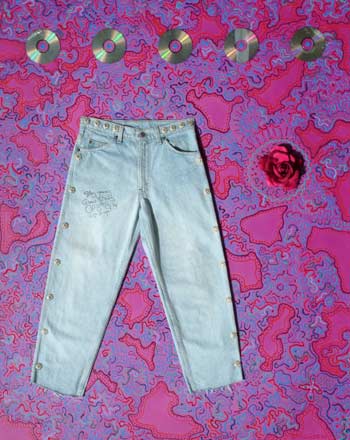 ● ●
Angry Anderson 2004
Sold
A
tribute by the artist to Angry Anderson, the rock legend, Australian icon and
outspoken supporter of worthy causes - an extraordinary human being.
Surviving an abused childhood and living a rebellious adolescence, he rose
Phoenix-like to become an outstanding rock musician. As lead singer of
Rose
Tattoo he achieved high acclaim for his hard-rocking, ground-breaking music and
outrageous stage antics.
In
recent years the wild boy has become less controversial, turning into an actor,
media personality and ardent promoter of worthy causes.
Despite Angry’s tough
exterior, he is a big-hearted and compassionate supporter of countless charities
and humanitarian organisations. His ongoing support has benefited countless
sick children, hospitals, the homeless, the hungry and the disadvantaged.
|
Tribute to Ernie Gerzabek's Art by Hungarian poet Johannes Katona
|
Having discovered my artworks,
this prominent Hungarian poet has written a
number of beautiful poems in response to some of my particular
paintings. |
|
It is quite flattering for me to receive a tribute of this
nature. Thank you Johannes.
Hungarian speaking viewers would be impressed, I am sure.
|
 |
|
 |
Álom-Világ...lehetnék mély Tenger árja,
Hogy a Világot szennyétől
mossam tisztára.
Hoznék bőséggel termő szigeteket,
Virágoktól pompázó kerteket,
Ahol szeretetben nevelitek
gyermekeiteket.
Ellátnám lakóit élelemmel,
A Tenger mélyének minden kincsével,
Mellyel ember szeme be nem tel.
Kicsik s nagyok Hullámaimon
Lovagolnátok
Lágyan ringó habjaimon alhatnátok,
Miközben féltve őrzöm álmotok... |
|
Pesti sikátorok...Köszönöm Pesti sikátorok,
Hogy eszembe jutottatok
Elkészíthettem eme vázlatot,
Mely emlékemben már oly kopott
Építettem én is Gruntot,
Hol gyermekkorom zajlott
Bú felejtőt, ahol
A lányokon nem láttunk Fűzőt
Tágas teret, melyen
Elférjen minden gyermek
És szép, zöld gyepet
Legyen hol sétálnia a gyepmesternek
Ültettem fa sort,
Mert az gyerekkoromban is gyér volt...
Köszönöm nektek!
Hűen őrzött emlékek,
Hogy alkotni késztettétek kezemet.
|
 |
|
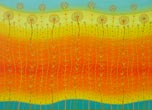 |
Árulkodó KépekRánézek eme festményre
S ifjú korom jut eszembe.
Fiatalon, hazától messze kerülve
Bolyongtam a Világ rengetegében.
Vonalak mutatják utamat
Az ábrák munkáimat
A színekkel népem jellemeztem,
Kiket máig nem feledtem
|
|
Távol a hazátólTávol a Hazától...
Lelkem vidám színekben tombol.
Magam előtt látom rétet s mezőt,
Magas hegyeket, a dúsan zöldellő erdőt
Gyermekkorom kedvenc játékát
A gyermekláncfű szerteszálló magvát.
Még érzem a Tisza oly fönséges illatát
A Duna lágy simogatását.
Távolban látom a Puszta hogyan párolog
Az oly sokat emlegetett Délibábot.
...s mert el kellett hagyjam Hazámat
Nem feledem Magyarságomat!
Eme színekben fejezem ki hovatartozásomat!
|
|
©
Ernie Gerzabek. All Rights Reserved |
Abstract Landscape Paintings Gallery |
|